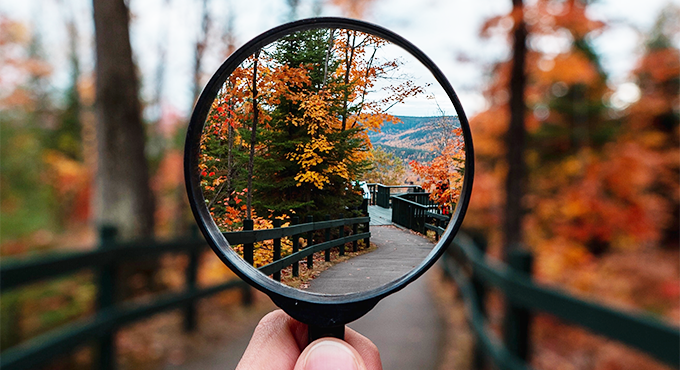 Nyheder
Nyheder 
Restoration of Notre-Dame cathedral: a tremendous scientific and technical project
“Notre-Dame of research”: under this slightly tongue-in-cheek title, the CNRS published on its website a report on the reconstruction of Notre-Dame de Paris. A few months after its reopening to the public after the tragic fire that burnt down the iconic national monument five years ago, the Centre national de la recherche scientifique (CNRS) offers a series of articles and short video reports on the many works that engaged French research as a whole since 15 April 2019.
In the CNRS-Le Journal, an information website designed for the general public, the Centre national de la recherche scientifique (CNRS) invites readers to a “journey at the heart of this tremendous scientific and technical project” that was and still is the restoration of the Notre-Dame de Paris cathedral. From the early discoveries in the wake of the fire to the reconstruction of “virtual copy of the building” and the inventory of fragments and the frame, the advice of experts regarding materials used or the digitalisation of the monument, all is covered to understand how the reconstruction of the building, a challenge over five years, has represented for science a key wealth of information.
A digital double
“Enter the backstages of the scientific adventure initiated as early as the next morning of the fire around the exposed cathedral.” This sentence starts the article that gathered contributions from CNRS experts and the French ministry of culture, in collaboration with the Public Authority in charge of the conservation and restoration of the Notre-Dame de Paris cathedral.
This adventure starts with a visit of Notre-Dame in virtual reality. After the fire that ravaged the cathedral, the remains of Notre-Dame de Paris have been entirely digitalised by CNRS researchers. Thanks to this video report, you can “dive deep in the virtual double of the building” and be transported in the heart of a “full size model” thanks to which scientists can study the materials that have been destroyed or parts that are currently inaccessible to the monument.
As the CNRS explains, the restoration of Notre-Dame de Paris has been supported by a “vast scientific project involving some fifty research teams”. Another report taking place in part on the damaged site of the cathedral also shows the impressive and spectacular work by a team of technicians to create a digital double of Notre-Dame, using a laser scanner to obtain three-dimensional images. The idea was to create “some sort of Google Earth of the cathedral”, by bringing together all past and future knowledge about the building on a collaborative platform. For the researchers, it is necessary to bring together “everything we know about the building, from the construction sketches to the 3D survey of its current state” and at the same time to be “capable of integrating all future information”. Because, rather than a “simple replica in computer-generated images, it’s more a question of building a database of new data and knowledge”.
A scientific analysis of materials
As early as 2020, one year after the fire, after the stabilisation of the building, researchers started working on the site CNRS/Notre-Dame. Research programmes to “safeguard the material heritage, model the structure and carry out acoustic studies” have paved the way for restoration, in collaboration with engineers and architects. A video report shows how these works are organised.
The idea was first to make the materials of Notre-Dame talk: wood, stone, iron, lead... What did we know about the materials used on Notre-Dame and the construction techniques used at the time? To answer this question, teams of researchers have analysed some materials “starting with the wood frame, a true forest made of thousands of oaks assembled 800 years ago”. 2,000 pieces of wood have been studied, sometimes they were intact, but mostly they were partly burnt.
The question of reusing Notre-Dame materials was also relevant for the stones of the cathedral. Should we use the same stones from quarries that have now disappeared, consolidate them, or find others? A research group on the Notre-Dame metal has also been launched, with iron study and dating as objective. Dating the cathedral iron has led to “reconstruct the history of masonry and framework”. Lead, a material present in the cathedral roof and spire, was not easy to study since it had mostly melted!
And even more difficult was the study of sound. What’s more impalpable than what was heard in the cathedral before its destruction by fire? How to “rebuild the sound of Notre-Dame”? The CNRS writes that the pipe organ, only partly damaged by the fire, was not the “only one to make Notre-Dame ring”. That is why researchers tried to “reconstruct the sound atmosphere of the cathedral at different times, but also restrain the impact of restoration work on acoustics”. Notre-Dame de Paris had extraordinary acoustics, and a pair of researchers has analysed it, thanks among others to a record of the sound atmosphere made in 2013. These works were used by architects to restore the acoustics and adapt it to the circumstances and its use, including to understand whether the works currently in course would have an influence over the organ.
Explore more:





Commentaires
Du skal være tilsluttet for at skrive en kommentar Connectez-vous.